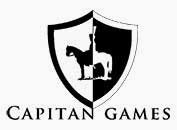The history
After the Battle of Vitoria on June 21, 1813 and the withdrawal of the forces of King Joseph,
French rule in the Iberian peninsula consisted only of the eastern coastal area (along with some cities with garrisons in Catalan) held by the Marshal Suchet, who stood as an independent force until 1814 and in the fortresses of San Sebastian and Pamplona were immediately besieged by
Wellington, whose forces amounted to 62,000 British, Potuguese and Spanish men defending the line of western Pyrenees.
Faced with the threat of an Allied invasion, Napoleon sent from Germany to
Marshal Jean de Dieu Nicholas Soult, who reorganized the demoralized French forces and built up a new army of 64,000 men in three Army Corps: Clausel (left), D'Erlon (center) and Reille( right). One month after the battle of Vitoria,
Soult attacked the border passes in the Navarrese Pyrenees, in the zone located between Saint Jean de Luz and Saint Jean Pied de Port.
On
25th July, Soult with the Corps of Clausel and Reille fought the reinforced British 4th division and a Spanish division at the
Battle of Roncevalles. The Allied force successfully held off all attacks during the day, but retreated from Roncevalles Pass that night in the face of overwhelming French numerical superiority.
Also on 25th, the D'Erlon's Corps severely tried the British 2nd division at the
Battle of Maya. The British withdrew from the Maya Pass that evening.
Wellington rallied his troops a short distance north of Pamplona and repelled the attacks of Clausel and Reille at the
Battle of Sorauren on
28th July. Instead of falling back northeast towards Roncevalles Pass, Soult made contact with D'Erlon's Corps on 29th July and began to move north.
Soult abandoned the offensive on 30th July and headed towards France, having failed to relieve either garrison.
On
30th July, Wellington attacked Soult's rearguard at
Sorauren, driving some French troops to the northeast, while most continued to the north. Soult led his army up the Bidassoa River valley and escaped the British after a final rearguard action at
Etxalar on
2nd August.
In conclusion,
Soult failed to relieve the sieges at San Sebastian and Pamplona, suffered about
13,000 casualties.
Wellington's total losses for the campaign were
7,000. The next action was the
Battle of San Marcial on the Bidasoa River banks,
at the end of August.
More basic information at the Wikipedia:
Battle of the Pyrenees
The
British version can be read at the works of Oman, Napier and many other British historians. The
French version can be seen in
'Campagne de Marechal Soult dans les Pyrenees Occidentales' and the Spanish version in
'Historia del levantamiento, guerra y revolucion de España Vol V' de Toreno. The full Toreno's book can be found at
Historia del levantamiento, guerra y revolución de España (go to the 23th book).
The Wargaming
The battles of Maya, Roncesvalles ansd Sorauren were known to me, 30 years ago, thanks to the
Terence Wise's booklet
The Peninsular War: 1813 ( Model & Allied Publications Ltd., Hemel Hempstead, 1974). This was one of the first wargaming books I buyed by mail from Great Britain.
The
pictures of the booklet, with detailed battle maps showing the movements of the armies and depicting French and British Airfix 1/72 plastic miniatures, like the ones I was starting to collect and paint, were an
important inspiring factor in my early wargaming activities.
I can remember me carefully placing the scenery on a very simplified wargaming table, following the troops movements marked in the book, moving carefully my newly painted figures, and trying to apply the rules of the
Bruce Quarrie's book Napoleonic Wargaming.
Ah, we were young!





















.jpg)
.jpg)


.png)
.png)






































